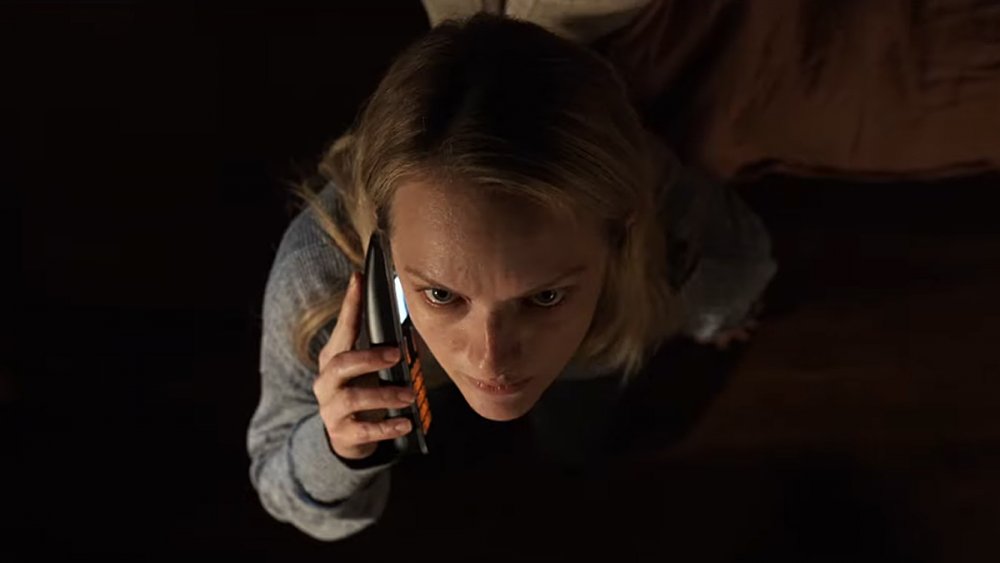
The Invisible Man is one of the classic monsters many have grown up reading about and watching on screen. Belonging to the same ranks as Frankenstein’s Monster, Wolfman, Dracula, and the Mummy, the story of a man driven insane by the power to turn invisible has been widely spread since H.G. Wells 1897 novel. From that book to the Universal Pictures film adaptations of the same name beginning in 1933, the Invisible Man has been seen as a tragic tale of what happens when a man is corrupted by power and a thirst to control. Universal Pictures, in partnership with Blumhouse Productions, now brings a modern adaptation to the monster franchise, this time placing a woman at the center of events and intertwining the real horrors of domestic violence into the story. The Invisible Man (2020) uses well executed jump scares and the realistic tragedy of a woman fighting to be listened to in order to create a terrifying and eerily relevant movie.
Directed and written by Leigh Whannell (Insidious), The Invisible Man stars Elisabeth Moss (The Handmaid’s Tale), Aldis Hodge (Hidden Figures), Storm Reid (A Wrinkle in Time), Harriet Dyer (Love Child), and Oliver Jackson-Cohen (The Haunting of Hill House). This modernized adaptation places Moss’s character, Cecilia, in a fight for her life and sanity as she battles what she believes to be an abusive ex-boyfriend who has seemingly discovered the power to turn invisible.
The Invisible Man is a movie that plays on the senses to create an atmosphere of paranoia and dark foreboding. The viewers are placed on pins and needles, just like Cecilia, as we wonder what’s there that we may not be able to see. In a time when many horror films play on what jumps out of the darkness, this film leans more into making your brain wonder what is standing in the darkness that you may never see. Because of this, the audience has to rely greatly on Moss’s performance to hint at what we should be wary of in a seemingly empty room. The actress does not disappoint.
Moss’s performance, as a woman trying to regain some semblance of life after an abusive relationship, is at the heart of this movie. The H.G. Wells novel placed the scientist Griffin as the focal point, as did later film adaptations. In the novel, there was no main woman character; in the 1933 classic, the female character was the love interest of the main character. In this interpretation, the main woman is the protagonist. We experience her journey, and her terror, attempting to fight a villain that she cannot see. Moss gives Cecilia layers as we witness her experiencing a storm of emotions—fear, resolve, and powerlessness. She walks the line of being perhaps the hero or a tragic figure. Moss carries this film with her performance and does so efficiently.
What makes this movie relevant is that it plays into the very real experience of domestic violence, particularly against women, and just how deadly it can be. Worldwide, 35% of women have experienced physical violence at the hands of an intimate partner A Global Study on Homicide reported that half of the women who were victims of homicide in 2012 were killed by intimate partners or family members. A study as recent as 2019 shows that murders by intimate partners have been on the rise since 2014. Domestic violence is not only a moral issue, but an economic and systemic one.
Four in five victims of domestic violence are women. In many cases, women are afraid of leaving these situations due to economic hardship. In 2005, 50% of U.S. cities surveyed reported domestic violence as a primary cause of homelessness. The danger is real, and The Invisible Man interweaves it in the plot through Cecilia’s story, making for chilling similarities to one too many reports we’ve read about in the news.
It’s a scary movie that delivers on the frights, but there are some drawbacks. While the first and second acts of the film are intense and well-paced, the third act falters. With a run time of just over two hours, the film could have benefited from ending twenty minutes earlier than it actually did. One to two plot twists are enough; by the third, it begins to feel drawn out.
If you’re looking for a horror movie that has some effectively terrifying moments with a theme relevant to a modern day social struggle then you’ll enjoy The Invisible Man. And even if you just want to experience a fresh take on a horror classic and relish in the scary thrills, you’ll enjoy it too.










